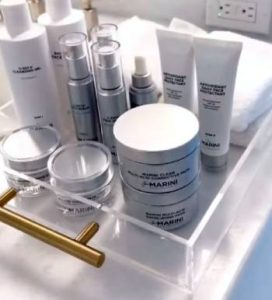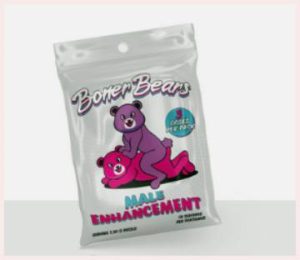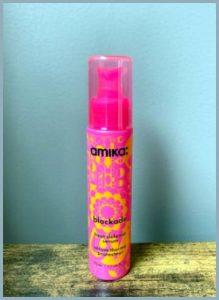As summer heats up, I’m on a mission to find the perfect sunscreen to keep my skin safe without slowing me down.
In this showdown, I compare Banana Boat Sport Ultra SPF 50 and Coppertone Sport SPF 50, sharing my experiences, weighing pros and cons, and analyzing their performance.
With a conversational vibe, I’ll help you decide which brand suits your active lifestyle.
From sweat resistance to skin feel, I’ve got you covered—grab one of these sunscreens and enjoy the sun worry-free!
Comparison Table: Banana Boat Sport Ultra SPF 50 Vs. Coppertone Sport SPF 50
| Feature | Banana Boat Sport Ultra SPF 50 | Coppertone Sport SPF 50 |
| SPF Level | 50 | 50 |
| Broad-Spectrum | Yes | Yes |
| Water Resistance | 80 minutes | 80 minutes |
| Active Ingredients | Avobenzone, Homosalate, Octisalate, Octocrylene | Avobenzone, Homosalate, Octisalate, Octocrylene |
| Price (12 oz) | ~$10-$15 | ~$12-$18 |
| Key Feature | Lightweight, non-greasy | Moisturizing with Vitamin E |
| Scent | Mild citrus | Faint sunscreen scent |
| Best For | Sports, outdoor activities | Sports, daily use |
My Journey with Banana Boat and Coppertone
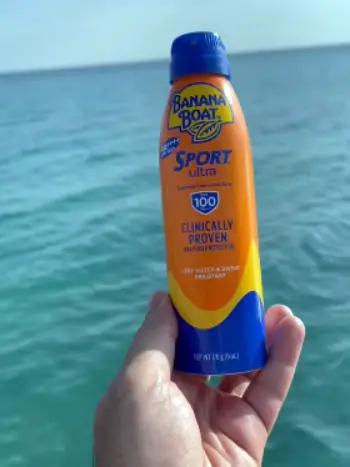
I’m no stranger to long days under the sun—whether it’s hiking trails, hitting the beach, or just chasing my kids around the park.
Sunscreen is my shield, but finding one that doesn’t feel like a sticky mess is a challenge.
Last summer, I decided to pit Banana Boat Sport Ultra SPF 50 against Coppertone Sport SPF 50 to see which one could keep up with my active life.
I grabbed the 12 oz pump bottle of Banana Boat and the 7 oz Coppertone lotion, ready to test them in real-world scenarios.
First up was a fishing trip.
I slathered on Banana Boat before heading out, loving how the pump dispenser made application a breeze.
The lotion absorbed in seconds, leaving no greasy film, and its mild citrus scent didn’t linger on my gear—a win for not scaring the fish.
After hours in the sun and some serious sweating, my skin stayed burn-free.
The 80-minute water resistance held up during a quick dip, though I reapplied afterward to be safe.
Next, I tried Coppertone during a beach volleyball game.
The lotion felt thicker at first, but rubbing it in gave my skin a smooth, hydrated feel, thanks to its Vitamin E boost.
It didn’t drip into my eyes despite the sweat, which was a relief after past sunscreens stung like crazy.
The scent was faintly “sunscreen-y,” but not overpowering.
By the end of the day, no burns, though I noticed a slight residue on my arms that needed extra scrubbing in the shower.
Both sunscreens impressed me, but their differences stood out.
Banana Boat felt lighter and blended faster, perfect for quick applications during intense activities.
Coppertone’s moisturizing formula was great for longer days when my skin needed extra care.
You’ll see which one fits your vibe as we break it down further.
What Sets Banana Boat Sport Ultra SPF 50 Apart
Banana Boat, a sun care staple since 1976, crafted Sport Ultra SPF 50 for folks like me who live for outdoor action.
Its broad-spectrum formula protects against UVA and UVB rays, with active ingredients like avobenzone (2.7%), homosalate (9%), octisalate (4.5%), and octocrylene (6%).
The oxybenzone-free lotion is lightweight, non-greasy, and designed to endure sweat and water for 80 minutes.
Available in 3 oz to 12 oz sizes, it’s budget-friendly at ~$10-$15.
The pump bottle is my favorite for mess-free use, though the scent might not suit everyone.
You’ll love its quick absorption for on-the-go protection.
What Makes Coppertone Sport SPF 50 Unique
Coppertone, a trusted name since 1944, brings Sport SPF 50 to the table with a focus on hydration and durability.
Its broad-spectrum formula mirrors Banana Boat’s active ingredients—avobenzone, homosalate, octisalate, and octocrylene—but adds moisturizing agents like glycerin and Vitamin E.
Priced at ~$12-$18 for 7 oz, it’s slightly pricier but offers a smooth, nourishing feel.
The lotion’s 80-minute water resistance makes it ideal for sports or beach days.
I found its thicker texture comforting for dry skin, but it takes more effort to rub in.
You’ll appreciate its skin-soothing benefits for daily use.
Pros and Cons of Banana Boat Sport Ultra SPF 50
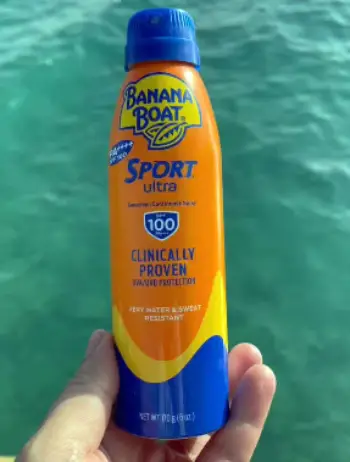
Pros:
- Lightweight feel: Absorbs in seconds, leaving no sticky residue.
- Sweat resistant: Stays put during intense workouts or hot days.
- Water resistant: Holds up for 80 minutes in pools or oceans.
- Oxybenzone-free: Safer for sensitive skin and marine environments.
- Affordable: ~$10-$15 for 12 oz, great for frequent use.
- Pump dispenser: Easy, mess-free application, especially on the go.
- Broad-spectrum: Protects against UVA/UVB rays for comprehensive coverage.
- Travel sizes: 3 oz tubes are TSA-friendly for trips.
- Subtle scent: Mild citrus fragrance fades quickly, avoiding irritation.
- Non-irritating: No breakouts or stinging for my combination skin.
Cons:
- Reapplication needed: Every 80 minutes in water or sweat.
- Slight residue: Initial sheen requires extra rubbing to blend.
- No PA rating: Lacks specific UVA protection details.
- Eye irritation: Stings if it gets in eyes, not ideal for face.
- Chemical formula: May concern eco-conscious users.
- Pump clogs: 12 oz bottle’s nozzle can jam over time.
- Not reef-safe: Not fully labeled as reef-friendly despite no oxybenzone.
- Mild scent: Some prefer fragrance-free options.
- Feels heavy in humidity: Can feel thick if over-applied in muggy weather.
- Smaller sizes deplete fast: 3 oz tubes run out quickly with daily use.
Pros and Cons of Coppertone Sport SPF 50
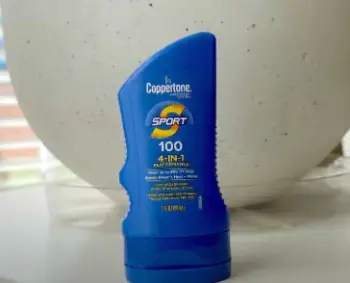
Pros:
- Moisturizing formula: Vitamin E and glycerin hydrate dry skin.
- Broad-spectrum: Shields against UVA/UVB rays effectively.
- Water resistant: Lasts 80 minutes during swimming or sweating.
- Non-greasy: Blends into a smooth, non-sticky finish.
- Oxybenzone-free: Gentler for skin and environment.
- Widely available: Found in most drugstores or online.
- Smooth application: Spreads evenly with minimal effort.
- No eye sting: Didn’t irritate my eyes during sweaty activities.
- Budget-friendly: ~$12-$18 for 7 oz, decent value.
- Durable packaging: Sturdy bottles hold up in bags or beach totes.
Cons:
- Thicker texture: Takes longer to rub in than Banana Boat.
- Slight residue: Leaves a faint sheen if not fully blended.
- No PA rating: Unclear on specific UVA protection strength.
- Chemical formula: Not ideal for reef-safe preferences.
- Scent noticeable: Faint sunscreen smell may bother some.
- Smaller bottle: 7 oz depletes faster than Banana Boat’s 12 oz.
- Not face-specific: May feel heavy for facial use.
- Reapplication required: Every 80 minutes in water or sweat.
- Pricey per ounce: Slightly costlier than Banana Boat.
- Can feel sticky: In humid conditions, it clings more than desired.
Performance in Real-World Scenarios
I put both sunscreens through their paces across various activities.
On a 5-hour hike, Banana Boat’s lightweight formula shone—no burns, no greasiness, even after sweating buckets.
The pump bottle made reapplying mid-trail a snap.
Coppertone held up during a 3-hour beach volleyball session, keeping my skin hydrated and protected.
Its thicker texture felt comforting but needed more rubbing to avoid a sheen.
For daily wear, like walking to work, Coppertone’s moisturizing feel was a bonus, while Banana Boat’s quick-drying formula suited rushed mornings.
In water, both lasted 80 minutes, but reapplication was key.
You’ll find Banana Boat better for fast-paced sports, Coppertone for longer, skin-nourishing needs.
Build Quality and Packaging
Banana Boat’s 12 oz pump bottle is sturdy, with a secure cap that prevents leaks in my gym bag.
The 3 oz squeeze tube is perfect for travel but runs out fast.
Coppertone’s 7 oz bottle feels robust, with a flip-top cap that’s easy to open one-handed.
Both brands use plastic packaging, but Banana Boat’s pump is more convenient for quick applications.
Coppertone’s smaller size feels less bulky but holds less product.
The lotions are white and blend clear with effort, though Coppertone’s thicker formula takes longer.
You’ll prefer Banana Boat’s pump for speed, Coppertone’s bottle for portability.
Ingredients Breakdown
Both sunscreens share identical active ingredients: avobenzone, homosalate, octisalate, and octocrylene, ensuring broad-spectrum protection.
Banana Boat’s inactive ingredients, like silica, prioritize a non-greasy finish.
Coppertone adds glycerin and Vitamin E for hydration, making it feel richer.
Neither contains oxybenzone, aligning with safer skincare trends, but they’re not fully reef-safe due to other chemicals.
I noticed Banana Boat’s formula feels lighter, while Coppertone’s moisturizing agents suit drier skin.
You’ll choose Banana Boat for a matte finish, Coppertone for extra nourishment, but both may concern eco-conscious users.
Cost Vs. Value Analysis
Banana Boat Sport Ultra SPF 50 costs ~$10-$15 for 12 oz (~$0.83-$1.25/oz), making it a budget champ.
The 3 oz tube (~$5) is great for short trips but less economical.
Coppertone Sport SPF 50 runs ~$12-$18 for 7 oz (~$1.71-$2.57/oz), pricier per ounce but still affordable.
Banana Boat’s larger size lasts longer for daily use, while Coppertone’s smaller bottle suits occasional outings.
Both deliver 80-minute water resistance and broad-spectrum protection, justifying their cost.
You’ll save with Banana Boat for frequent use, but Coppertone’s hydration is worth it for dry skin.
Who Should Choose Banana Boat Sport Ultra SPF 50
Banana Boat is your go-to if you’re an active person—think runners, swimmers, or hikers—who needs a lightweight, quick-drying sunscreen.
Its non-greasy formula and pump dispenser make it ideal for on-the-go application.
I loved it for fishing and workouts, but sensitive skin folks should patch-test due to its chemical base.
If you want a budget-friendly, high-volume option, the 12 oz bottle is perfect.
You’ll skip it if you need a face-specific or reef-safe formula, as it stings eyes and isn’t eco-certified.
Who Should Choose Coppertone Sport SPF 50
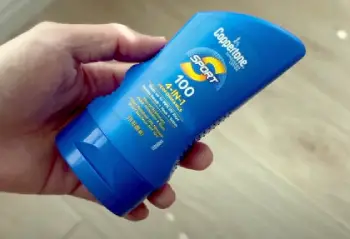
Coppertone suits active folks who also want skin hydration.
Its Vitamin E and glycerin make it great for dry skin or longer outdoor sessions, like beach days or picnics.
I found it reliable for volleyball and daily wear, but its thicker texture requires more rubbing.
It’s not ideal for facial use due to potential heaviness, and eco-conscious users may hesitate over its chemical formula.
You’ll pick Coppertone for its nourishing feel and wide availability, especially if you don’t mind a slightly higher price.
Safety and Application Tips
- Apply Generously
Use ~1 oz (a shot glass) for your body, ~0.25 oz for your neck.
I apply 15 minutes before sun exposure for maximum absorption.
- Reapply Often
Reapply every 80 minutes in water or sweat, or every 2 hours otherwise.
I set a timer during beach trips to stay on track.
- Rub Thoroughly
Massage both sunscreens well to avoid residue.
Banana Boat blends faster; Coppertone needs extra effort.
- Patch Test
Test on your wrist first, especially for sensitive skin.
I had no issues, but avobenzone can irritate some.
- Store Properly
Keep below 77°F to maintain formula integrity.
I store mine in a cool cabinet, checking for texture changes.
- Avoid Eyes
Both can sting if they reach your eyes.
I use a face-specific sunscreen to avoid discomfort.
- Pair with Gear
Wear hats or UV clothing for extra protection.
I use a cap during hikes to reduce sunscreen reliance.
- Clean Dispensers
Wipe Banana Boat’s pump or Coppertone’s cap to prevent clogs.
I clean mine weekly for smooth use.
- Hydrate Post-Use
Apply a moisturizer after rinsing off sunscreen to combat dryness.
I use aloe vera gel for soothing relief.
- Check Expiry
Use within 12 months of opening.
I mark the open date on bottles to track freshness.
Also Read: Comparison of Coco and Eve Vs. Bondi
Comparing Banana Boat and Coppertone to Other Brands
- Banana Boat Vs. Sun Bum Original SPF 30
Sun Bum’s SPF 30 lotion (~$18, 8 oz) is reef-friendlier with Vitamin E and a coconut scent.
I tried it at the beach; it felt thicker than Banana Boat and had a stronger fragrance.
You’ll pick Sun Bum for eco-conscious needs, but Banana Boat’s lighter feel and lower price win for sports.
- Coppertone Vs. Sun Bum Original SPF 30
Sun Bum’s moisturizing formula rivals Coppertone’s, but its scent is more pronounced.
Coppertone’s hydration felt better for my dry skin, though Sun Bum’s reef-safe claim is a draw.
You’ll choose Coppertone for daily nourishment, Sun Bum for eco-friendly vibes.
- Banana Boat Vs. Thrive Bodyshield SPF 50
Thrive’s physical sunscreen (~$25, 5.5 oz) uses zinc oxide for reef-safe protection.
I tested it hiking; it absorbed well but was harder to rub in than Banana Boat.
You’ll go for Thrive for eco-focus, but Banana Boat’s ease and cost are better for active use.
- Coppertone Vs. Thrive Bodyshield SPF 50
Thrive’s minimal ingredients suit sensitive skin, but Coppertone’s chemical formula blends easier.
I preferred Coppertone’s hydration for daily wear.
You’ll pick Thrive for reef safety, Coppertone for affordability and moisturizing.
- Banana Boat Vs. La Roche-Posay Anthelios SPF 50
La Roche-Posay (~$35, 1.7 oz) is a premium chemical sunscreen for sensitive skin.
Its fluid texture was great for my face but too costly for body use.
Banana Boat’s budget price and endurance make it better for sports.
You’ll choose La Roche-Posay for luxury, Banana Boat for value.
- Coppertone Vs. La Roche-Posay Anthelios SPF 50
La Roche-Posay’s lightweight formula didn’t sting my eyes, unlike Coppertone.
But Coppertone’s larger size and lower cost make it practical for body use.
You’ll opt for La Roche-Posay for facial care, Coppertone for all-day activities.
Environmental and Skin Sensitivity Considerations
Both brands are oxybenzone-free, aligning with safer skincare trends, but neither is fully reef-safe due to other chemicals like octocrylene.
Banana Boat’s lighter formula suited my combination skin, while Coppertone’s hydration helped my dry patches.
For sensitive skin, patch-test both, as avobenzone can irritate.
Eco-conscious users might lean toward mineral sunscreens like Thrive.
You’ll weigh reef safety against performance—Banana Boat for sports, Coppertone for nourishment.
Also Read: My Thoughts On Australian Gold Suntan Lotion
Frequently Asked Questions (FAQs)
No single sunscreen tops all, but Banana Boat Light As Air SPF 50 is praised for its lightweight, non-greasy feel.
In 2022, some Banana Boat spray sunscreens were recalled for benzene contamination, not affecting Sport Ultra lotion.
Yes, Coppertone is reliable, with hydrating, broad-spectrum formulas ideal for active and daily use.
Banana Boat’s lighter, sport-focused formula edges out Hawaiian Tropic’s heavier, tropical-scented lotion for active users.
Final Thoughts
After testing Banana Boat Sport Ultra SPF 50 and Coppertone Sport SPF 50, I’m hooked on both for different reasons.
Banana Boat’s lightweight, quick-drying formula is your best bet for sports and fast-paced adventures.
Coppertone’s moisturizing feel wins for daily wear and dry skin.
Both offer solid protection, but your choice depends on your needs—speed or hydration.
Pick Banana Boat for budget-friendly endurance or Coppertone for nourishing coverage, and you’ll stay protected all summer long!

